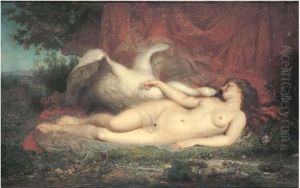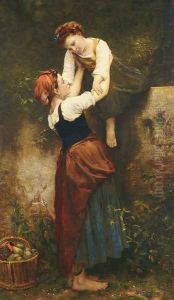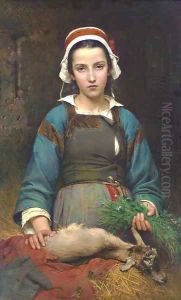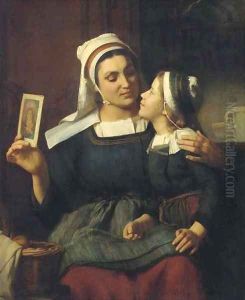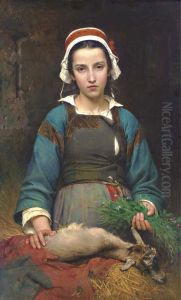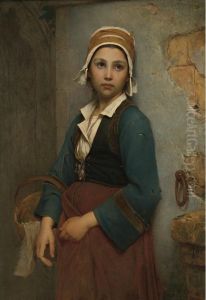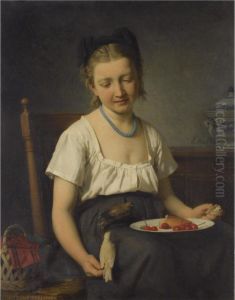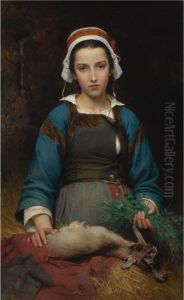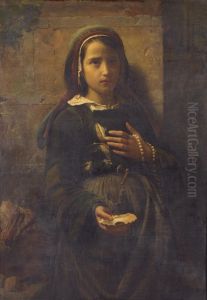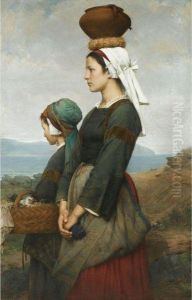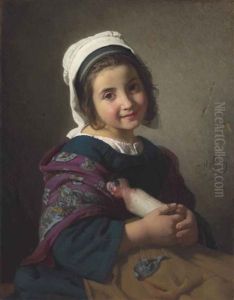Emile Auguste Hublin Paintings
Émile Auguste Hublin was a 19th-century French painter known for his genre scenes, portraits, and history paintings. Born in 1830 in Paris, France, Hublin developed an interest in art at a young age and pursued his studies at the École des Beaux-Arts, where he trained under influential artists of the time. His work was influenced by the Romantic movement, which was characterized by an emphasis on emotion and individualism, as well as glorification of the past and nature.
Hublin's career began to flourish in the 1850s and 1860s, a period during which he regularly exhibited his work at the Paris Salon, an official art exhibition of the Académie des Beaux-Arts in Paris. His paintings often depicted scenes from French history, literature, and everyday life, capturing the social dynamics and customs of his time. Hublin's attention to detail and his ability to convey the textures of fabrics and interiors were noteworthy and contributed to the realism of his work.
Despite his success, Hublin did not achieve the same level of fame as some of his contemporaries. Nevertheless, he was respected by his peers and art critics for his technical skill and his capacity to evoke the spirit of the era he portrayed. His works can be found in various museums, and they continue to be studied by art historians interested in the French art of the 19th century.
Hublin's life was also marked by his involvement in the artistic community of Paris, and he was known to have been part of the intellectual circles that included writers, musicians, and other artists. He remained an active figure in the Parisian art world until his death in 1891. Hublin's legacy is that of a skilled painter who captured the essence of his time, providing a window into the past through his meticulous and evocative paintings.
